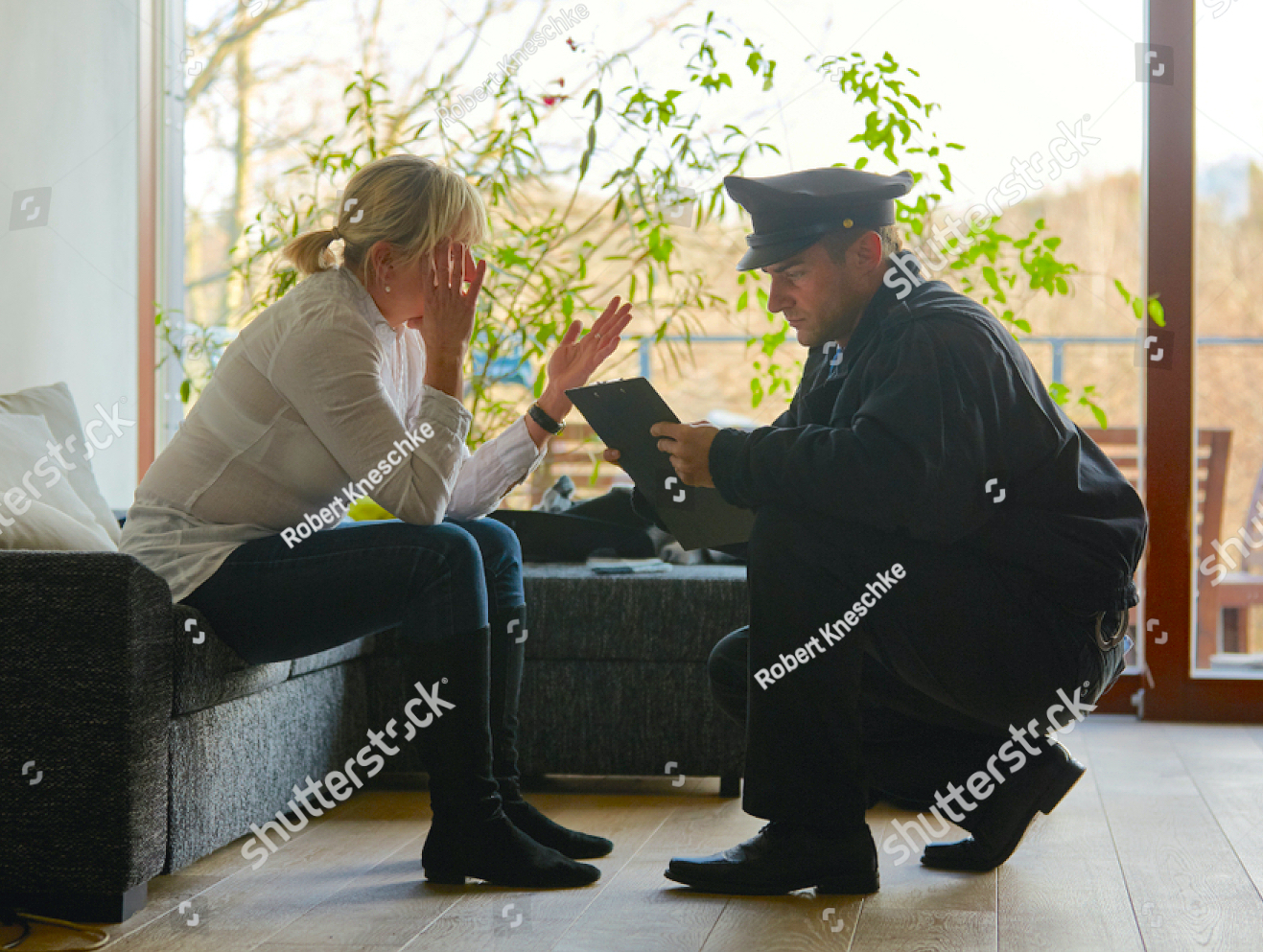Gun Violence Restraining Orders
GVROs can temporarily remove guns from people at risk of suicide or violence
Gun violence restraining orders (GVROs) are a tool to temporarily remove firearms from people at imminent risk of harm to themselves or others.
Some patients may be at risk of harming themselves or someone else, and unwilling or unable to separate themselves from firearms that they own. A GVRO is a temporary civil court order to remove any firearms the person currently possesses and to suspend the person’s ability to purchase additional firearms or ammunition.1 No criminal activity or mental health history is required, only a demonstrated risk of firearm-related harm.
Under extreme risk legislation, one suicide is prevented for every 10-20 firearm removals.
History
California’s gun violence restraining order law took effect in 2016. Modeled after domestic violence restraining orders (DVROs), GVROs provide a legal mechanism for authorities to temporarily remove firearms and ammunition from individuals who pose a risk of harm to themselves or to others in the near future, and to prevent them from purchasing more. GVROs are known in other states as extreme risk protection orders or “red flag” orders.
The first GVRO legislation was introduced in the wake of the 2014 shooting in Isla Vista, California, in which a 22-year-old man killed seven people, including himself, and injured 14 more. Prior to the attack, his parents had expressed concern about their son and requested a welfare check. The deputies who went to his apartment concluded that he did not pose an immediate threat and hadn’t committed a crime, so they had no cause to search his apartment or put him on a mental health hold. At that time, despite the reported concern of his parents, no legal mechanism existed to separate him from the three handguns and 400 rounds of ammunition he had legally purchased over the past few months.
Uses of GVROs
GVROs provide a tool for temporarily removing firearms from people who are deemed to pose a threat of firearm violence or suicide. A GVRO is a useful intervention for a high-risk person who
- Owns gun(s) him or herself
- Does not own guns but has demonstrated intent to purchase them, or
- Does not own guns but has access to them, for example, by living with someone who owns them
A recent study of extreme risk protection orders in Washington State found that 28% of orders were filed for concerns about the respondent’s risk for harm to self, 36% for concerns about harm to others, and 35% for concerns about harm to both self and others. About 80% of all respondents personally owned a firearm.5
In California, as in many other states, GVRO legislation was passed in the wake of a mass shooting, but these orders are more frequently used in situations where a person is at risk of suicide.2-4
Currently, in California, family or household members and law enforcement can petition for a GVRO.1 Law enforcement officers who encounter a crisis situation can request an emergency order from a judge by phone if the person poses “an immediate and present threat of danger.” Family  members can petition the court for an ex parte order (i.e., a temporary order) if there is “substantial likelihood” that the person “poses a significant danger of harm to self or others in the near future by having access to a firearm.” Either order, if granted, lasts for 21 days.1
members can petition the court for an ex parte order (i.e., a temporary order) if there is “substantial likelihood” that the person “poses a significant danger of harm to self or others in the near future by having access to a firearm.” Either order, if granted, lasts for 21 days.1
In California, for an order to be extended beyond that, the person subject to the order, also called the respondent, must have an opportunity to be heard in court before the 21 days are over.1 The judge determines whether the order should be canceled, allowed to expire, or extended for up to five years, prohibiting the respondent both from possessing and purchasing firearms and ammunition for the duration.
GVROs are civil, not criminal, actions and do not affect individuals’ abilities to own or purchase firearms after expiration.
GVROs can be collaborative and in certain situations, respondents agree to the GVRO or [a person can request a GVRO for themselves].
What You Can Do
In California, clinicians cannot directly petition for a GVRO for a patient. However, if patients are at risk of harming themselves or others with firearms, and are not willing to safely store or dispose of their firearm while their risk is mitigated, providers may want to collaborate with family members or local law enforcement to develop alternative plans for safety. If the provider is concerned about a risk of suicide or other firearm-related harm and is able to talk with family, they can give family members information about how to file an ex parte order if indicated.
In more urgent situations in which a patient poses “an immediate and present danger,” providers may want to have law enforcement consider an emergency GVRO. For example, if a patient reveals they are in the process of acquiring weapons and ammunition to perpetrate a mass shooting at their workplace, encouraging law enforcement to file an emergency GVRO may be the fastest way to separate that patient from their firearms.
 Providers should use their clinical judgement to determine whether a patient’s risk of suicide or interpersonal violence merits sharing their protected health information (PHI) with an outside party. HIPAA allows for disclosure of PHI “when the covered entity has a good faith belief that the disclosure: (1) is necessary to prevent or lessen a serious and imminent threat to the health or safety of the patient or others and (2) is to a person(s) reasonably able to prevent or lessen the threat.”6 According to the US Department of Health and Human Services, “HIPAA expressly defers to the professional judgment of health professionals in making determinations about the nature and severity of the threat to health or safety posed by a patient.”6
Providers should use their clinical judgement to determine whether a patient’s risk of suicide or interpersonal violence merits sharing their protected health information (PHI) with an outside party. HIPAA allows for disclosure of PHI “when the covered entity has a good faith belief that the disclosure: (1) is necessary to prevent or lessen a serious and imminent threat to the health or safety of the patient or others and (2) is to a person(s) reasonably able to prevent or lessen the threat.”6 According to the US Department of Health and Human Services, “HIPAA expressly defers to the professional judgment of health professionals in making determinations about the nature and severity of the threat to health or safety posed by a patient.”6
GVROs provide a mechanism for removing firearms, but not other weapons. In cases where a person may be at risk of perpetrating other types of violence against a household member or intimate partner, a DVRO may provide additional protections. If specific types of threats are made to a psychotherapist, a Tarasoff duty to protect may apply. And in some cases, a GVRO may be a useful adjunct to quickly remove firearms from a person who also meets criteria for an emergency mental health hold, or 5150.
- Effects of Risk-Based Firearm Seizure Laws in Connecticut and Indiana on Suicide Rates, 1981–2015. Psychiatric Services.
- Implementation and Effectiveness of Connecticut’s Risk-Based Gun Removal Law: Does it Prevent Suicides?. Law and Contemporary Problems.
- Criminal Justice and Suicide Outcomes with Indiana's Risk-Based Gun Seizure Law. The Journal of the American Academy of Psychiatry and the Law.
- Extreme Risk Protection Orders in Washington: A Statewide Descriptive Study. Annals of Internal Medicine.
- (OCR), O. (2017, October 17). 520-Does HIPAA permit a provider to disclose PHI about a patient if the patient presents a serious danger to self or others. Retrieved May 27, 2020.
Click below to learn more about
potential interventions.
A domestic violence restraining order prohibits people subject to them from possessing and purchasing firearms temporarily and long-term.
If a patient makes a threat to a psychotherapist of serious violence against identifiable victim(s), the therapist has a duty to protect the potential victim and notify the police.
If a person is at imminent risk of self-harm and needs mental health treatment, an involuntary or a 24-hour mental health hold may be indicated.
For more information, see these peer-reviewed articles.
Pallin, R., Schleimer, J. P., Pear, V. A., et al. (2020). Assessment of Extreme Risk Protection Order Use in California From 2016 to 2019. JAMA Network Open.
Gondi, S., Pomerantz, A. G., & Sacks, C. A. (2019). Extreme Risk Protection Orders: An Opportunity to Improve Gun Violence Prevention Training. Academic Medicine.
Wintemute, G. J., Pear, V. A., Schleimer, J. P., et al. (2019). Extreme risk protection orders intended to prevent mass shootings: A case series. Annals of Internal Medicine.
Kivisto, A. J., & Phalen, P. L. (2018). Effects of Risk-Based Firearm Seizure Laws in Connecticut and Indiana on Suicide Rates, 1981–2015. Psychiatric Services.
Swanson, J. W., Norko, M. A., Hsiu-Ju, L., et al. (2017). Implementation and Effectiveness of Connecticut’s Risk-Based Gun Removal Law: Does it Prevent Suicides? Law and Contemporary Problems.
Additional Resources on Gun Violence Restraining Orders
Speak for Safety: What is a GVRO?
Speak for Safety explains the Gun Violence Restraining Order (GVRO), why the law was passed, and how to obtain a GVRO.
Ask for a Gun Violence Restraining Order
The Judicial Council of California provides instructions on how to ask for a restraining order to have guns taken away from someone you worry should not have them.
Can a GVRO help me?
Information on the GV-100 form and how a gun violence restraining order can help you.
Gun Violence Restraining Orders: Alternative or Adjunct to Mental Health-Based Restrictions on Firearms?
This paper describes the GVRO , considers case examples to assess its impact as a strategy for preventing gun violence, and reviews the California law.
Gun Violence Restraining Orders Can Save Lives
An article in the National Review by David French on how GVRO's can keep guns out of the hands of dangerous people and save lives.
Extreme Risk Protection Orders: FAQ
Frequently asked questions and answers about extreme risk protection orders by Giffords, EFSGV, and Alliance For Gun Responsibility.